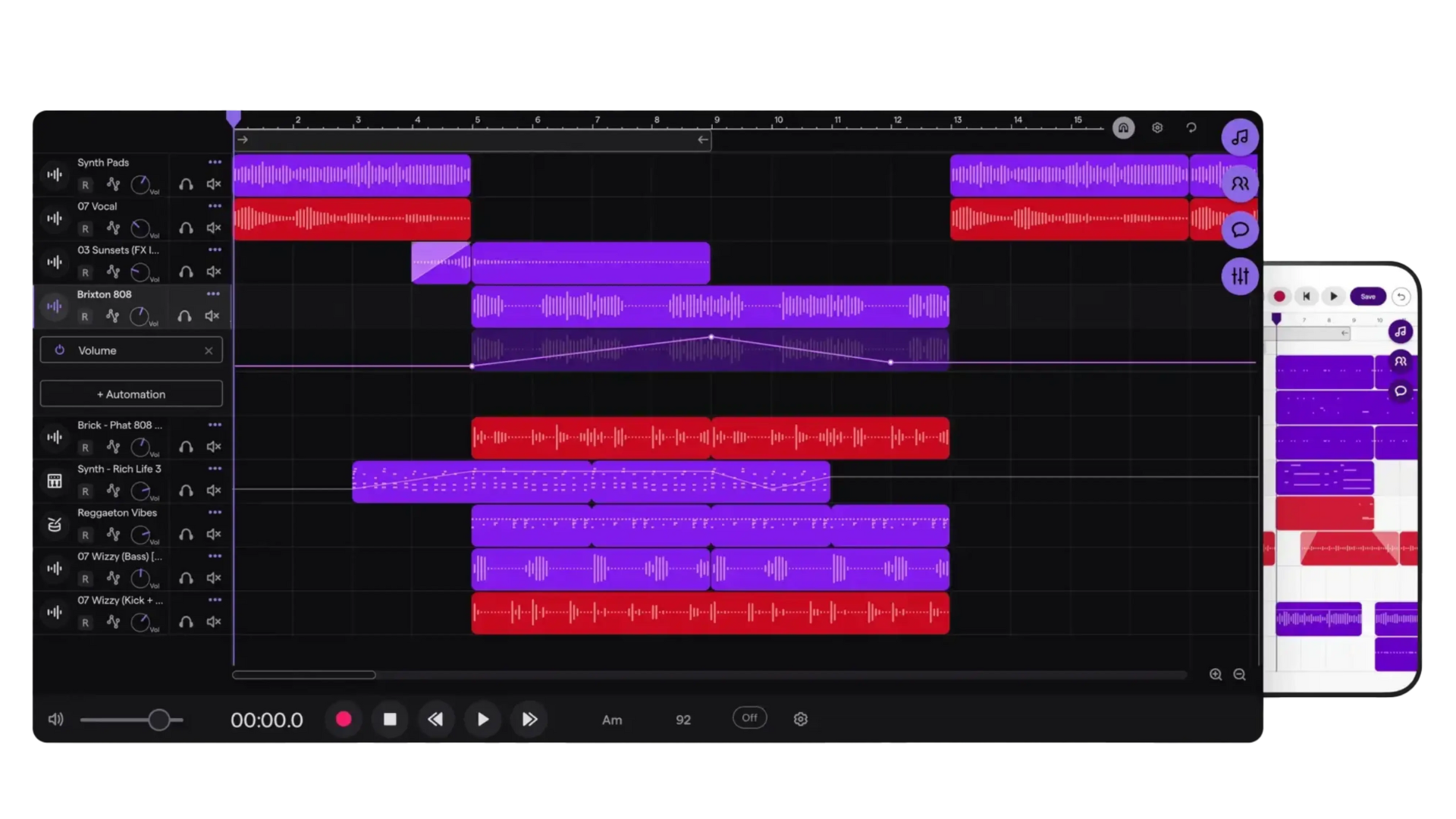Finding the Best Robotic Process Automation (RPA) software can feel like a maze, especially when trying to choose the most effective tool for your business needs. In 2024 alone, there are countless RPA tools available in the market each boasting unique features and benefits.
This blog post is your compass, guiding you toward choosing not only the best but also the most suitable RPA software tailored to your specific requirements. Read on to discover how you can transform challenging choices into confident decisions in today’s rapidly evolving automation landscape!
Understanding Robotic Process Automation
Robotic Process Automation (RPA) is a technology that uses software robots or “bots” to automate repetitive and rule-based tasks within business processes. These bots are programmed to interact with various applications, just like human users, by mimicking their actions on the user interface.
RPA can be classified into three types: attended automation, unattended automation, and hybrid automation.
Definition
The software uses bots to do tasks on the computer that people usually do. These tasks can be things like answering emails or filling out forms.
The software makes these jobs faster and with fewer errors than if a person did them. It’s like having a robot that works on your computer! Some top RPA tools are UiPath, Blue Prism, and Microsoft Power Automate.
They stand out because they are good at what they do and easy to use.
Types
Robotic process automation is a great tool. But, there are different types to know about. The first type is rule-based. This one follows set rules to get work done. The second type is self-learning. It watches what you do and then does it on its own. The third type is predictive. It uses the past to guess what will happen next. Let’s look at them one by one.
- Rule-Based RPA: This type uses rules you set up in advance. UiPath is well-known for this style of RPA.
- Self-Learning RPA: This form learns from your actions and habits over time. Tools like Automation Anywhere shine here.
- Predictive RPA: These can guess future outcomes based on past events or data patterns.
Benefits and Applications of RPA
Robotic process automation (RPA) offers numerous benefits and has a wide range of applications in various industries. RPA software can greatly increase efficiency by automating repetitive tasks, saving time, and reducing errors.
It also provides cost savings as it eliminates the need for manual labor and reduces the risk of human error. Additionally, RPA improves accuracy by consistently following predefined rules and processes.
Some common use cases for RPA include data entry, invoice processing, customer service interactions, inventory management, and report generation.
Increased efficiency
Robotic Process Automation (RPA) makes work fast. It does tasks again and again without breaks. Things get done quicker than before. Humans take rest, eat, and sleep but robots don’t need to do any of that.
They work all the time which means more things get done in less time. This is good for businesses as they can do more work with fewer people.
Cost savings
One of the key benefits of implementing Robotic Process Automation (RPA) software is the potential for cost savings. RPA can automate repetitive and time-consuming tasks, reducing the need for manual labor and minimizing errors.
By streamlining processes and increasing efficiency, businesses can save on operational costs and allocate resources more effectively. Additionally, RPA eliminates the need for hiring additional employees to handle mundane tasks, providing further cost reductions.
With RPA, organizations can achieve significant cost savings while improving productivity and profitability.
Improved accuracy
When choosing the best robotic process automation software, improved accuracy is a crucial factor to consider. RPA tools can perform repetitive tasks with high precision, minimizing errors and improving overall data accuracy.
By automating manual processes, RPA reduces the risk of human error and ensures consistent results. This increased accuracy not only improves efficiency but also enhances data quality and reliability.
When evaluating different RPA software options, look for features that promote accurate data handling and error detection mechanisms to ensure reliable and precise automation workflows.
Common use cases
Robotic Process Automation (RPA) software is used in various industries and sectors to automate repetitive tasks and streamline business processes. Here are some common use cases for RPA:
| Use Case | Description |
|---|---|
| Data Entry and Validation | RPA software can extract and validate data from various sources and enter it into systems, reducing errors and manual entry. |
| Customer Service and Support | RPA bots can handle routine customer inquiries, allowing human agents to focus on complex issues. |
| Invoice Processing | RPA tools automate invoice processing, improving efficiency and accuracy in financial processes. |
| HR Operations | RPA assists with employee onboarding, record management, and leave requests, streamlining HR tasks. |
| Supply Chain Management | RPA automates inventory management, purchase orders, and supplier relations in supply chain operations. |
| Financial Operations | RPA automates financial tasks like accounts reconciliation, payment processing, and reporting. |
| IT Support | RPA bots handle routine IT tasks, freeing IT staff to focus on critical issues. |
| Report Generation | RPA gathers data, performs analysis, and generates reports in various formats. |
| Claims Processing | RPA automates tasks in insurance claims processing, from verification to communication with policyholders. |
| Compliance and Audit | RPA assists in compliance monitoring and generates reports for audits and regulatory requirements. |
Key Features to Consider When Choosing RPA Software
When choosing RPA software, it is important to consider key features such as scalability, ease of use, integration capabilities, security, and pricing model. These factors play a crucial role in ensuring the success of your automation efforts.
Read on to learn more about how these features can impact your decision-making process.
Scalability
Scalability is an important factor to consider when choosing robotic process automation (RPA) software. It refers to the ability of the software to handle increased workload and adapt as the needs of your business grow.
When selecting RPA software, it’s crucial to choose a solution that can scale with your organization without compromising performance or efficiency. Look for tools that offer flexible deployment options, such as cloud-based solutions, which can easily accommodate expanding operations.
Additionally, consider whether the software supports multi-bot architecture, allowing you to deploy multiple bots simultaneously and distribute workloads efficiently. By prioritizing scalability in your RPA software selection, you can future-proof your automation efforts and ensure long-term success.
Ease of use
Choosing an RPA software that is easy to use is essential for a smooth implementation process. Look for tools like UiPath, Automation Anywhere, Blue Prism, and WorkFusion that provide intuitive platforms.
These platforms should have user-friendly interfaces and require minimal coding knowledge to create and manage bots. It’s also important to consider the ease of bot setup as different requirements may call for various setup methods.
By selecting an RPA tool that prioritizes ease of use, you can streamline your automation efforts without unnecessary complications or steep learning curves.
Integration capabilities
A key feature to consider when choosing RPA software is its integration capabilities. The software should be able to seamlessly integrate with your existing systems and applications, such as CRM platforms, ERP systems, and databases.
This ensures that the RPA tool can effectively interact with other software and perform automated tasks across different processes. Look for RPA tools that offer pre-built connectors or APIs that allow for easy integration without much coding or technical expertise required.
Smooth integration capabilities enable efficient data exchange and collaboration between various systems, making your automation processes more streamlined and effective.
Security
Security is a crucial factor to consider when choosing robotic process automation (RPA) software. You want to ensure that the software you select has strong security measures in place to protect your data and processes.
Look for RPA tools that offer features like encryption, access controls, and audit trails to monitor activity. It’s also important to choose a vendor with a good reputation for security and compliance.
By prioritizing security in your selection process, you can have peace of mind knowing that your RPA implementation will be secure and protected from potential threats.
Pricing model
When choosing the best Robotic Process Automation (RPA) software for your business, it’s important to consider the pricing model. Different RPA vendors may have different pricing structures, so you need to find one that aligns with your budget and requirements.
Some common pricing models include a per-bot or per-transaction fee, annual subscriptions, or customized plans based on your specific needs. It’s essential to carefully evaluate the costs involved and assess whether they fit within your organization’s financial capabilities.
How to Choose the Best RPA Software for Your Business
To choose the best RPA software for your business, assess your needs and goals, research top vendors, read reviews and compare features, consider a trial or demo, and evaluate for long-term compatibility.
Find out more in this blog post!
Assess your needs and goals
Before choosing the best Robotic Process Automation (RPA) software for your business, it’s important to assess your needs and goals. Consider what tasks or processes you want to automate and what outcomes you hope to achieve.
Are you looking to increase efficiency, reduce costs, or improve accuracy? Understanding your specific requirements will help narrow down the options and find a software solution that aligns with your objectives.
Additionally, consider factors such as scalability, ease of use, integration capabilities, security features, and pricing models when evaluating different RPA tools. By carefully assessing your needs and goals upfront, you can make an informed decision that will meet the unique requirements of your organization.
Research top vendors
To choose the best Robotic Process Automation (RPA) software, it’s important to research and compare top vendors in the market. One popular choice is UiPath, known for its user-friendly platform.
Gartner’s product reviews can also help filter and compare different RPA tools. Consider factors like ease of bot setup and the specific needs of your organization. Other reputable vendors include Automation Anywhere, Blue Prism, Microsoft Power Automate, and WorkFusion.
Look at their features, pros, and cons to make an informed decision that aligns with your requirements. Remember to explore open-source or free options as well.
Read reviews and compare features
One of the essential steps in choosing the best Robotic Process Automation Software is to read user reviews and compare the features of different tools. This gives you an idea of the real-time performance, issues, benefits, and user experience of the software.
| RPA Software | Key Features | User Reviews |
|---|---|---|
| UiPath | Intuitive platform, scalable, easy integration | Great tool for automating repetitive tasks, very user-friendly |
| Automation Anywhere | Easy bot setup, allows for different bot requirements | Users appreciate its simplicity, flexibility and support for various programming languages |
| Blue Prism | Secure, efficient, reliable performance | Users report high satisfaction with its security and robustness |
| Microsoft Power Automate | Great integration with other Microsoft products, easy to use, affordable pricing model | Favorable reviews for seamless integration with the Microsoft ecosystem, affordable for small-medium businesses |
| WorkFusion | Powerful AI capabilities, scalable, easy to implement | Users like its machine learning features and ease of automation |
Remember, every business has specific needs and requirements. Therefore, it’s crucial to choose an RPA software that aligns with your business needs. This comparison table should give you a head start. Always consider trying a demo or trial of the software before making a final decision. Consider exploring open-source and free RPA tools as well. It’s worth taking the time to review, compare, and assess the best fit for your organization.
Consider a trial or demo
Before making a final decision on the best Robotic Process Automation (RPA) software for your business, it’s important to consider taking a trial or demo of the tools you’re interested in.
This will allow you to get hands-on experience with the software and see if it meets your specific needs and requirements. During the trial or demo, pay attention to how easy it is to use the RPA tool and whether it integrates well with your existing systems.
Test out different features and functionalities that are important for your business processes. Additionally, observe how scalable and secure the software is during this trial period.
By evaluating the software through a trial or demo, you can make an informed decision based on firsthand experience rather than relying solely on reviews or feature comparisons from other sources.
Evaluate for long-term compatibility
It is crucial to evaluate the long-term compatibility of an RPA software before making a decision. Consider whether the software can adapt and scale as your business grows. Look for features like flexibility, extensibility, and integration capabilities that will allow seamless integration with existing systems and future technologies.
Also, assess the vendor’s roadmap and commitment to ongoing development and support. This ensures that you invest in a solution that will meet your evolving needs and provide value for years to come.
Conclusion
In conclusion, choosing the best Robotic Process Automation (RPA) software requires assessing your needs and goals, researching top vendors, reading reviews, comparing features, considering trials or demos, and evaluating for long-term compatibility.
It’s important to consider factors like scalability, ease of use, integration capabilities, security, and pricing model. By carefully considering these criteria and exploring the features of different RPA tools like UiPath, Automation Anywhere, Blue Prism, Microsoft Power Automate, and WorkFusion, you can make an informed decision that aligns with your specific requirements.
Start streamlining your processes and improving efficiency with the right RPA software for your business today!




